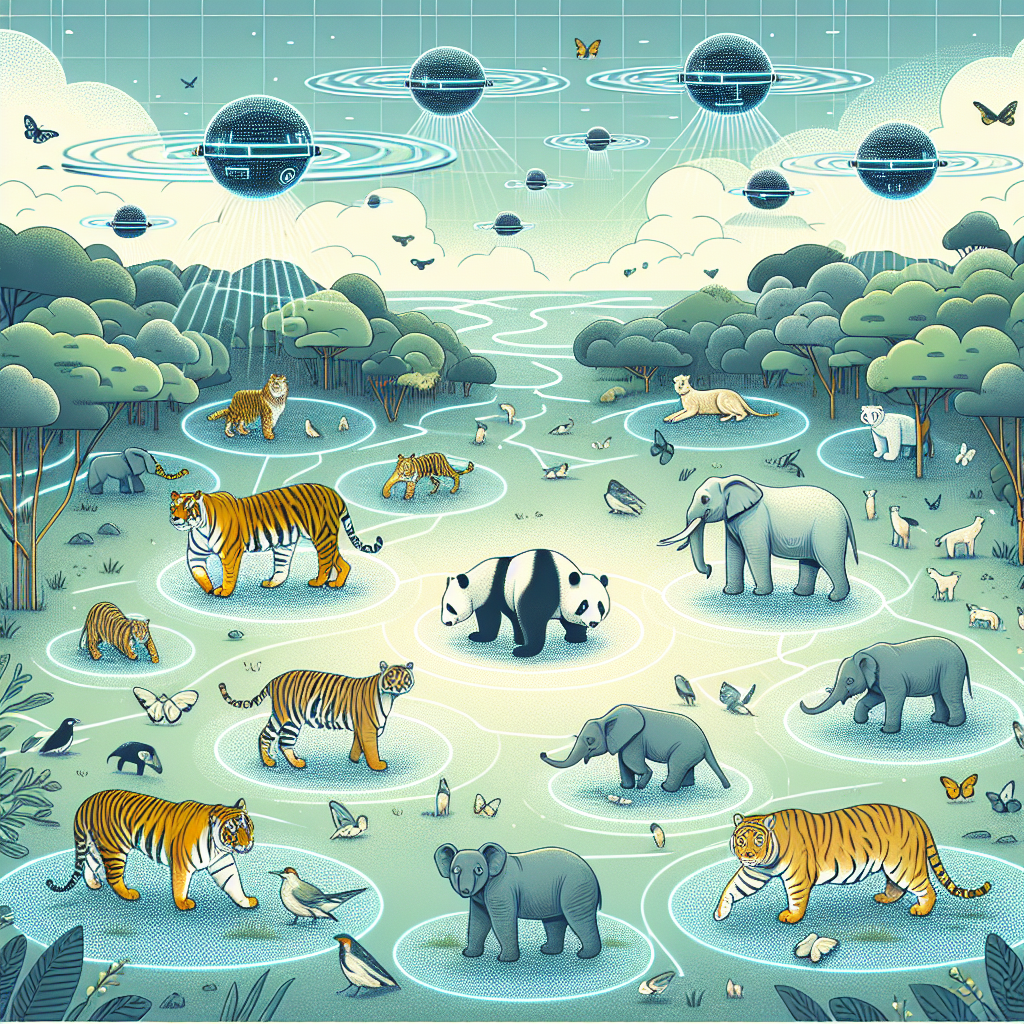In recent years, the use of artificial intelligence (AI) technology has been increasingly utilized to monitor and protect endangered species around the world. From tracking animals in their natural habitats to analyzing data to understand population trends, AI has proven to be a valuable tool in conservation efforts. By leveraging AI technology, researchers and conservationists are able to gather more accurate and timely data, enabling them to make more informed decisions to protect these vulnerable species. In this article, we will explore how AI is being used to monitor and protect endangered species, as well as the potential benefits and challenges of this technology.
One of the key ways in which AI is being used to monitor endangered species is through the use of camera traps. Camera traps are motion-activated devices that capture images or videos of animals in their natural habitats. These devices are often deployed in remote or hard-to-reach areas, allowing researchers to gather data on the presence and behavior of endangered species without disturbing them. AI technology is then used to analyze the vast amount of data collected by these camera traps, enabling researchers to identify individual animals, track their movements, and monitor population dynamics.
For example, researchers at the University of Oxford have developed an AI system called “Instant Wild” that uses machine learning algorithms to analyze camera trap images and automatically identify and classify species. This system has been used to monitor a wide range of endangered species, including tigers, snow leopards, and cheetahs, helping researchers to better understand their behaviors and habitats.
In addition to camera traps, AI is also being used to monitor endangered species through the analysis of satellite imagery. By leveraging satellite data, researchers can track changes in habitat loss, deforestation, and other environmental factors that impact the survival of endangered species. AI algorithms can analyze this data to identify areas of concern and prioritize conservation efforts in these critical habitats.
Furthermore, AI technology is also being used to monitor and protect marine species, such as whales and dolphins. For example, researchers at the Woods Hole Oceanographic Institution have developed an AI system that can analyze underwater acoustic recordings to detect and identify the calls of different whale species. This technology has been used to monitor the presence of endangered whales in the ocean, enabling researchers to better understand their migration patterns and behaviors.
Overall, the use of AI technology in conservation efforts has the potential to revolutionize the way we monitor and protect endangered species. By providing researchers with more accurate and timely data, AI can help to inform conservation strategies and ensure the long-term survival of these vulnerable species.
Benefits of Using AI to Monitor and Protect Endangered Species:
1. Improved Data Accuracy: AI technology can analyze vast amounts of data with greater accuracy and efficiency than traditional methods, enabling researchers to gather more precise information on endangered species.
2. Real-time Monitoring: AI systems can process data in real-time, allowing researchers to monitor endangered species more effectively and respond quickly to emerging threats.
3. Cost-effective: AI technology can help to reduce the costs associated with monitoring and protecting endangered species, making conservation efforts more sustainable in the long run.
4. Increased Awareness: By using AI to analyze data and track the movements of endangered species, researchers can raise awareness about the importance of conservation and inspire action to protect these vulnerable animals.
Challenges of Using AI to Monitor and Protect Endangered Species:
1. Data Privacy: There are concerns about the collection and use of data from endangered species, as well as the potential for misuse of this information by other parties.
2. Ethical Considerations: The use of AI technology in conservation efforts raises ethical questions about the impact on wildlife and the environment, as well as the potential for unintended consequences.
3. Technical Limitations: AI systems may have limitations in their ability to accurately analyze complex data or adapt to changing environmental conditions, which could affect the effectiveness of conservation efforts.
4. Accessibility: Not all researchers and conservationists have access to the necessary resources and expertise to implement AI technology in their conservation projects, limiting its widespread adoption.
FAQs:
Q: How can AI technology help to protect endangered species?
A: AI technology can help to protect endangered species by providing researchers with more accurate and timely data on population trends, habitat loss, and other factors that impact their survival. By analyzing this data, researchers can identify threats to endangered species and develop targeted conservation strategies to protect them.
Q: What are some examples of AI applications in monitoring endangered species?
A: Some examples of AI applications in monitoring endangered species include the use of camera traps to track animal movements, the analysis of satellite imagery to monitor habitat loss, and the use of acoustic recordings to detect and identify marine species.
Q: What are the potential benefits of using AI technology in conservation efforts?
A: The potential benefits of using AI technology in conservation efforts include improved data accuracy, real-time monitoring, cost-effectiveness, and increased awareness about the importance of protecting endangered species.
Q: What are some of the challenges associated with using AI technology to monitor and protect endangered species?
A: Some of the challenges associated with using AI technology to monitor and protect endangered species include data privacy concerns, ethical considerations, technical limitations, and accessibility issues for researchers and conservationists.
In conclusion, the use of AI technology in monitoring and protecting endangered species has the potential to revolutionize conservation efforts and ensure the long-term survival of these vulnerable animals. By providing researchers with more accurate and timely data, AI can help to inform conservation strategies and inspire action to protect endangered species. While there are challenges associated with the use of AI in conservation efforts, the benefits of this technology far outweigh the potential drawbacks. As AI technology continues to advance, it is crucial that researchers and conservationists continue to explore innovative ways to leverage this technology to safeguard endangered species for future generations.

